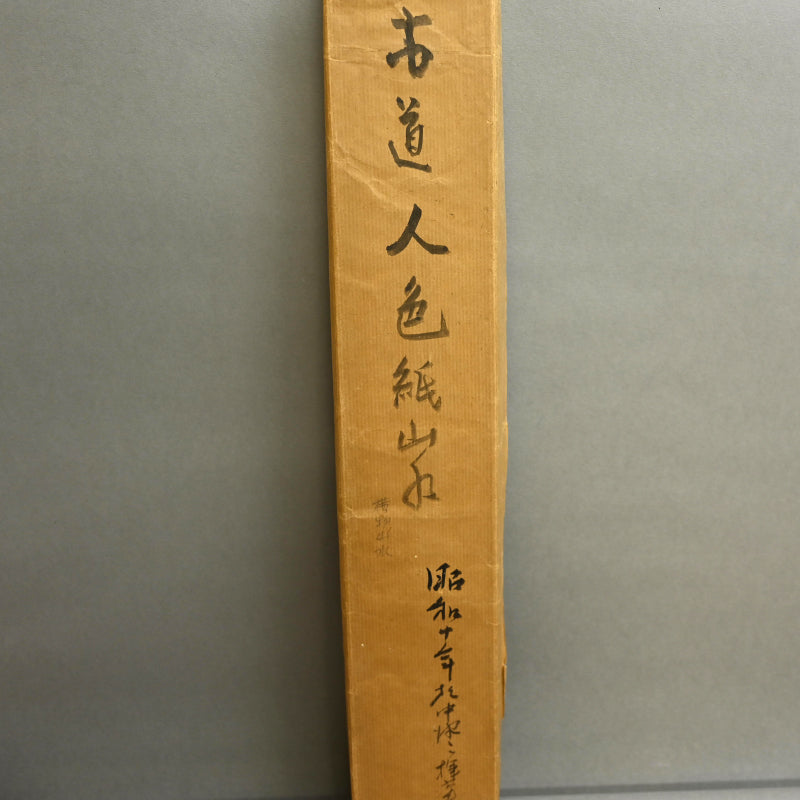Misty Ravine, Distant Hills ー福田 古道人 “烟霞幽谷図”
Misty Ravine, Distant Hills ー福田 古道人 “烟霞幽谷図”
Item Code: 古12
Couldn't load pickup availability
A radical landscape by Fukuda Kodojin enclosed in a period wooden box dated 1935. “Stone caverns and layered crags steeply deepening, heaven’s light reaches down to illuminate the hidden earth. This sentiment aligns beautifully with the painting’s mood: a world of recesses and inwardness, where illumination does not come from human presence but from the permeating clarity of nature itself. In this densely brushed landscape, Kodōjin conjures a labyrinth of cliffs and ravines rising through bands of drifting mist. Brush-tip dots evoke pine scrub clinging to near-vertical stone, while soft, spreading washes dissolve the boundary between air and mountain. The winding river—little more than a ribbon of pale ink—threads the scene like a barely articulated path through a world that is ultimately unmeasured and unmappable. Humanity, present only in the vacant hut perched as destination on the steep cliffs, has been entirely subsumed by geography; there is no solitary mendicant, traveler or fishing boat, and thus the viewer is placed in the position of the lone wanderer, encountering nature not as stage but as overwhelming condition. The painting’s atmosphere is contemplative rather than descriptive, presenting the landscape as a field of inwardness—something felt rather than surveyed. Magnitude is expressed not through scale but through silence, as though the mountains themselves retain their own ancient time, and humankind passes through as a momentary visitation. Ink on paper in a silk border with porcelain rollers. It is 39.5 x 116 cm (15-1/2 x 45-1/2 inches) and in fine condition.
Fukuda Kodojin (1865-1944) an eccentric self taught artist, his status as a poet, calligrapher and literati artist has reached legendary status. Born at a time of great change (4 years before the final fall of the Edo Government), he lived through the westernization of Meiji, Taisho Democracy, the rise of Imperialism and final defeat of the Showa eras. He was self taught, part of a small group of artists existing outside conventional circles in pre-war Japan. He moved to a village outside of Kyoto in 1901, where he supported himself and his family by privately tutoring those who wished to learn Chinese-style poetry. Kodojin was simply a scholar. His poetry, painting, and calligraphy all stem from a life-long cultivation of the mind. He was known to have taken the time just before his death to destroy the large portion of his own remaining work, leaving only that which must have met some personal criteria. For more on his life see the book Old Taoist, or Unexplored Avenues of Japanese Painting. Twenty five paintings by the artist formed a private exhibition (from Gitter-Yelen) at the New Orleans Museum of Art in 2000, and he is part of the Hakutakuan collection among many others.
Share




























